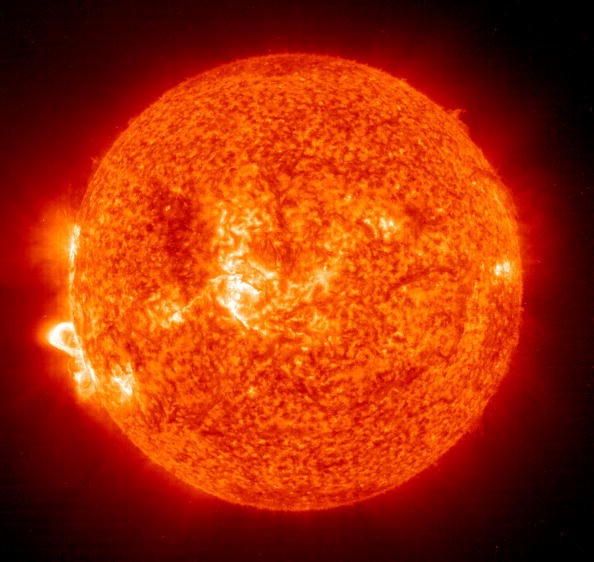Experts saw the greatest solar prominence eruption in history, and geomagnetic storm advisories are still in effect.
According to the Weatherboy, the largest solar prominence eruption ever witnessed was taken by a satellite operated jointly by European (ESA) and American (NASA) space organizations; the February 15 eruption was remarkable but unconnected to an ongoing Geomagnetic Storm Watch effect until tomorrow.
Largest Explosion in Recent History

The massive explosion was taken in a single photograph by the ESA/NASA Solar Orbiter spacecraft, together with the whole disc. A solar prominence is an enormous structure of tangled magnetic field lines that keeps intense concentrations of solar plasma aloft above the Sun's surface; magnetic field lines can occasionally assist shape these eruptions into arching loops.
These huge eruptions from the Sun, which are frequently coupled with a coronal mass ejection (CME), might have severe repercussions on Earth and the technology that orbits around it.
Fortunately, the Sun's tremendous explosion did not unleash a devastating particle shower on Earth. Instead, the CME that hit Earth on February 15 was deflected away from the planet. "It must have come from the side of the Sun facing away from us," ESA stated after analyzing the images.
Effects on Earth

While the Earth was spared from the effects of this eruption, it may not be so fortunate in the future. Another coronal hole is predicted to form shortly, causing geomagnetic storm conditions tomorrow. Government forecasters have issued a Geomagnetic Storm Watch on Sunday due to the space weather event.
"Mostly quiet conditions are expected through approximate midday on February 20 under nominal solar wind conditions," according to NOAA's Space Weather Prediction Center (SWPC). "However, around midday on February 20, an extension of the southern crown polar coronal hole is expected to become geoeffective, causing unsettled to G1 (Minor) storm levels," they add.
Geomagnetic Storm Effects
According to the SWPC, power grid fluctuations on Earth may occur during a G1-class storm event, while satellite orientation anomalies may occur in space.
High frequency (HF) radio propagation can decline at greater latitudes, causing communications to be impeded. Mother Nature may also light up the skies further south than average, with auroras visible as far south as Michigan and as far north as Maine.
The K-index, and hence the Planetary K-index, quantify the size of geomagnetic storms. Kp is a good indication of disturbances in the Earth's magnetic field, according to the SWPC. It is used to determine if geomagnetic alerts and warnings are needed for users affected by these disturbances.
The Kp index can assist in predicting how low the aurora will be and indicate how severe a geomagnetic storm's impact will be. For the time being, a Kp index of 5 is forecast for late February 20.
This is one of an increasing number of such storms that have hit Earth in recent weeks.
SpaceX Incident
A geomagnetic storm earlier this month was responsible for the loss of scores of SpaceX spacecraft. From NASA's Kennedy Orbit Center in Florida, SpaceX launched their Falcon 9 rocket into space on February 3
"Falcon 9's second stage released the satellites into their target orbit, with a perigee of roughly 210 kilometers above Earth, and each satellite achieved controlled flight," SpaceX said in a statement.
SpaceX places their satellites in these lower orbits so that if any fail to pass initial system checkouts, they will be promptly deorbited due to atmospheric drag. While the low deployment altitude necessitates the deployment of more powerful satellites at a significant expense, it is the proper thing to do to ensure a long-term space environment.
Read also: [UPDATE] Solar Storms: Are They Dangerous?
For more cosmic news, don't forget to follow Nature World News!
© 2025 NatureWorldNews.com All rights reserved. Do not reproduce without permission.





